
Protection of standard and weeping roses in winter
Why, when and how to protect them from severe cold?
Summary
Winter protection for roses, bushes that are hardy to about -20°C in most cases, is unnecessary for many varieties and across many regions. But for standard and weeping forms, it’s another story, because the graft, positioned very high on the stem, is heavily exposed to wind and frost. You therefore need specific winter protection and some additional maintenance to help them cope with winter cold. This type of rose is indeed more vulnerable to late frosts.
Discover our tips to best prepare your standard and weeping roses for winter!

Your standard or weeping roses trained high on a single stem are more sensitive to cold: protect them to ensure good vigour all summer (Photo: S. Nilsson)
When?
It all depends on your region, current climate conditions and age of your rose! But it is generally considered that November, the month for planting roses, is also a good time to protect your standard and weeping roses, when frosts set in.
Start by pruning very lightly the crown of the heads on your standard roses, and shortening the long branches of your weeping roses by about twenty centimetres: this will help you to cover them more easily with a winter fleece.
There are two main approaches to rose pruning: a single late‑winter pruning, or a two‑stage pruning, around November and then in February–March. For standard and weeping roses a single pruning at the end of winter is preferable. Cutting back young plants too severely can weaken them by exposing them to cold.
You may also read
Pruning rosesGraft union protection
Several measures actually help protect a standard or weeping rose properly during winter. The most important is protecting the graft point, a sensitive bulge of scar tissue that results from the junction between rootstock and scion : as it is located at least 80 cm high, it is particularly exposed to cold winter winds and to frost. This graft point will always need monitoring for standard or weeping roses, as it is an entry point for disease, for possible wounds, and above all… cold!
You must therefore take particular care with these roses to protect this clearly identifiable scar ring a few centimetres below the cluster of branches, whether planted in ground or in a pot. Wrap the graft point with a warm sleeve that you will make from various easy-to-find materials.
- prepare your sleeve using pieces of fabric (cotton, wool, synthetic, hessian, no matter) to obtain a long strip about 10 cm wide, sufficient to cover the entire graft point and wrap it several times. Your sleeve should be placed at the limit where the branches start, to cover the scar ring properly.
- Position it around the graft, and start winding it while stuffing it with thick but airy material such as wadding, or with plant materials like dry moss, very dry leaves or straw.
- Tie it with string or raffia, without compressing, to hold the sleeve in place.
- Remove this protective sleeve when temperatures begin to rise and your standard or weeping roses no longer risk morning frosts, around April.
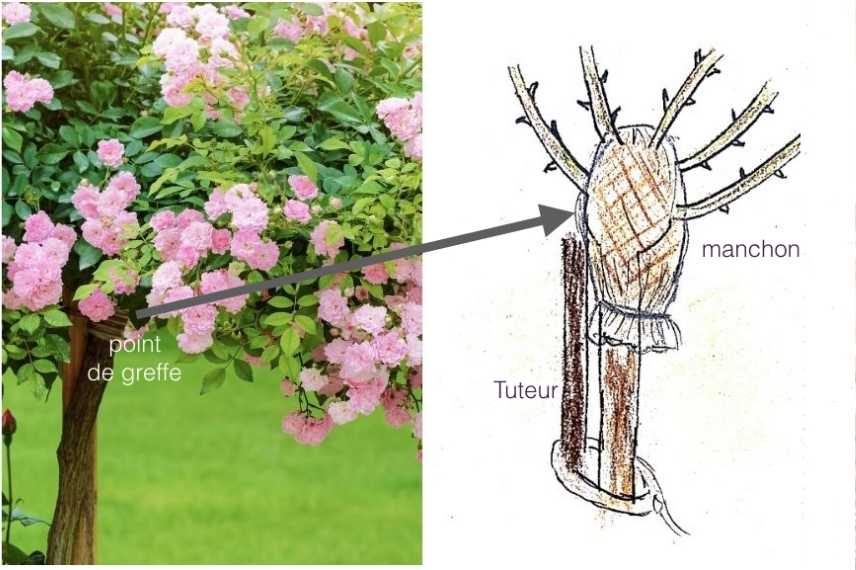
Discover other Tree Roses - Stem Roses
View All →Available in 2 sizes
Available in 3 sizes
Available in 2 sizes
Available in 4 sizes
Available in 2 sizes
Available in 2 sizes
Available in 2 sizes
Crown protection
During first years after planting a standard or weeping standard rose, or if growing it in a pot, protect its crown — the ball formed by the branches — by wrapping it in a winter fleece. Beforehand, lightly prune branches of your rose ball or dome to make the task easier.
Non-woven winter fleece is a breathable material that specifically protects against cold, insulating the rose while letting light and rain through, thus preventing any drying out. A fleece with a density of 30 g/m2 is sufficient for your standard and weeping standard roses. You can reuse it for several winters in a row. A jute winter cover, with loose mesh, is also perfect for hooding crowns and domes of standard roses, and can be a little more attractive.
Secure the winter fleece with raffia ties or string, enclosing the protective sleeve you have previously put in place. Remove the winter fleece as soon as temperatures rise, without waiting too long. March is generally mild enough in most regions to uncover your rose. Don’t hesitate to open the fleece slightly on sunny winter days!

Full protection with winter fleece (left), and crown-only protection with jute fabric (right)
You may also read
When and how to prune bush roses?Earthing up at the base
If you live in a region with a harsh climate, or if you have just planted your standard or weeping rose in the ground, do not hesitate to give it double protection by mounding soil around its base. This operation, which consists of covering several centimetres of the lower part of the rose stem with soil, helps protect it significantly, not here by covering the low graft as can be done with conventional roses but:
– by providing additional support at its base during the first years, making it less prone to strong gusts of wind,
– the mound of soil formed creates a kind of useful thermal cloche in mountainous areas, allowing a gain of 1 or 2 degrees during severe cold.
One important recommendation: use garden soil that is not damp to avoid any risk of rot.
Do not forget to remove this small mound of soil in March, as soon as your roses no longer need it.
Protecting your potted roses
Previous recommendations on protecting the graft union and crown also apply to your standard and weeping roses when planted in tubs or containers. Proceed in the same way as for your standard or weeping roses in open ground.
Your container has a definite advantage: it is mobile! Which means that if your pot is in a spot a little too exposed to winds (notably cold east winds in winter), do not hesitate to move it so as to shelter it as much as possible from wind: bring it closer to the house, or under an awning, and insulate the pot from cold ground by placing it on blocks or on a wooden wheeled stand. A small wooden pallet, though less attractive, can be perfectly suitable if you have two tubs to raise, for example.
For pot planting, protection of the substrate is important: a standard or weeping rose has a limited volume of soil, which serves as a cold barrier. It will be difficult to bank up the base in any container. Therefore, if your rose has just been planted or you live in an area with harsh winters, mulching around the base is beneficial: use straw or well-dried leaves, placed all around the stem.
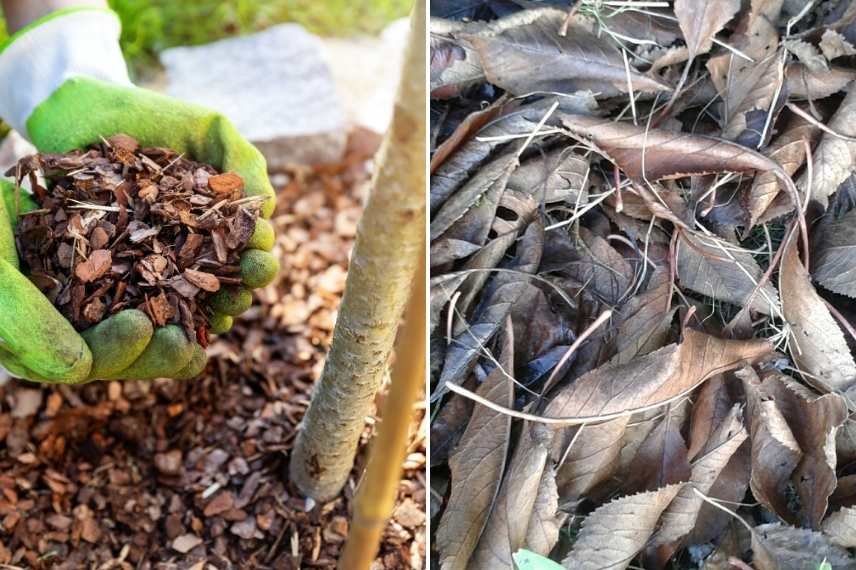
Mulch around the stem with shredded plant material, well-dried leaves, or straw
- Subscribe!
- Contents
![[protect_roses stems="and weeping roses" in_winter]](https://www.promessedefleurs.ie/blogwp/wp-content/uploads/2020/12/Proteger-rosiers-tiges-et-pleureurs-en-hiver.jpg)































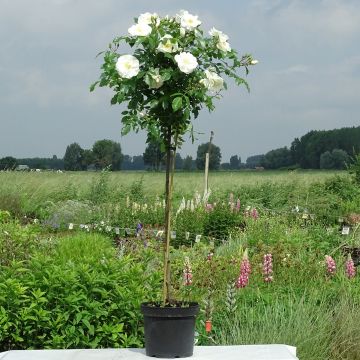
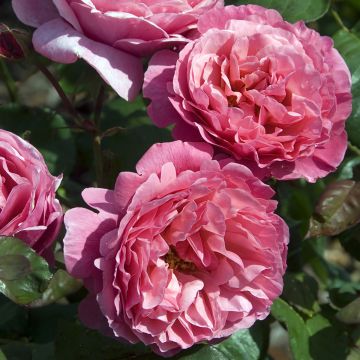
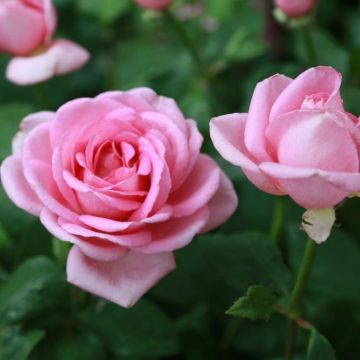
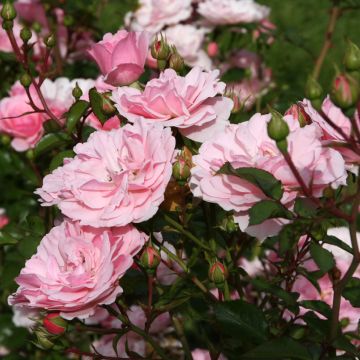

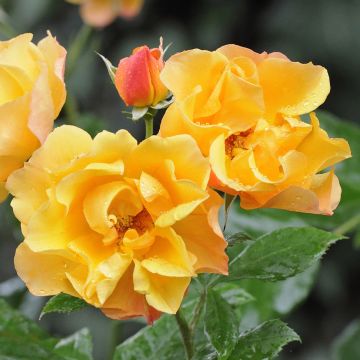
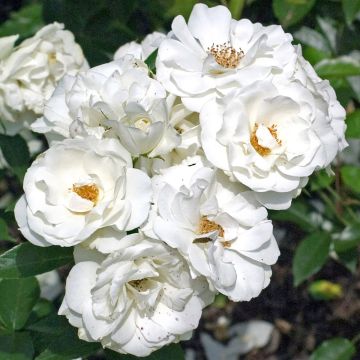
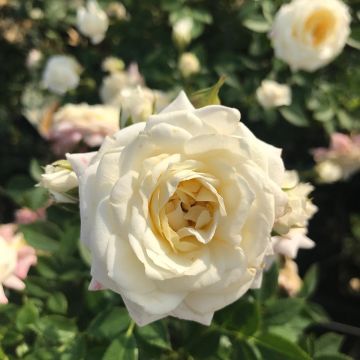
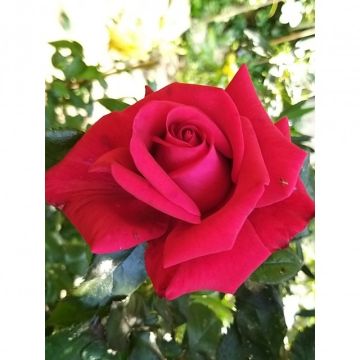
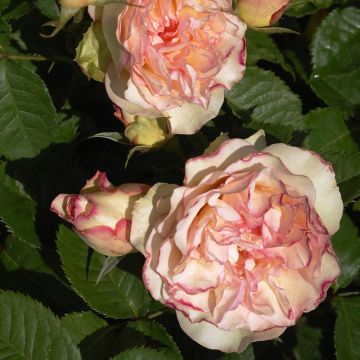
Feedbacks